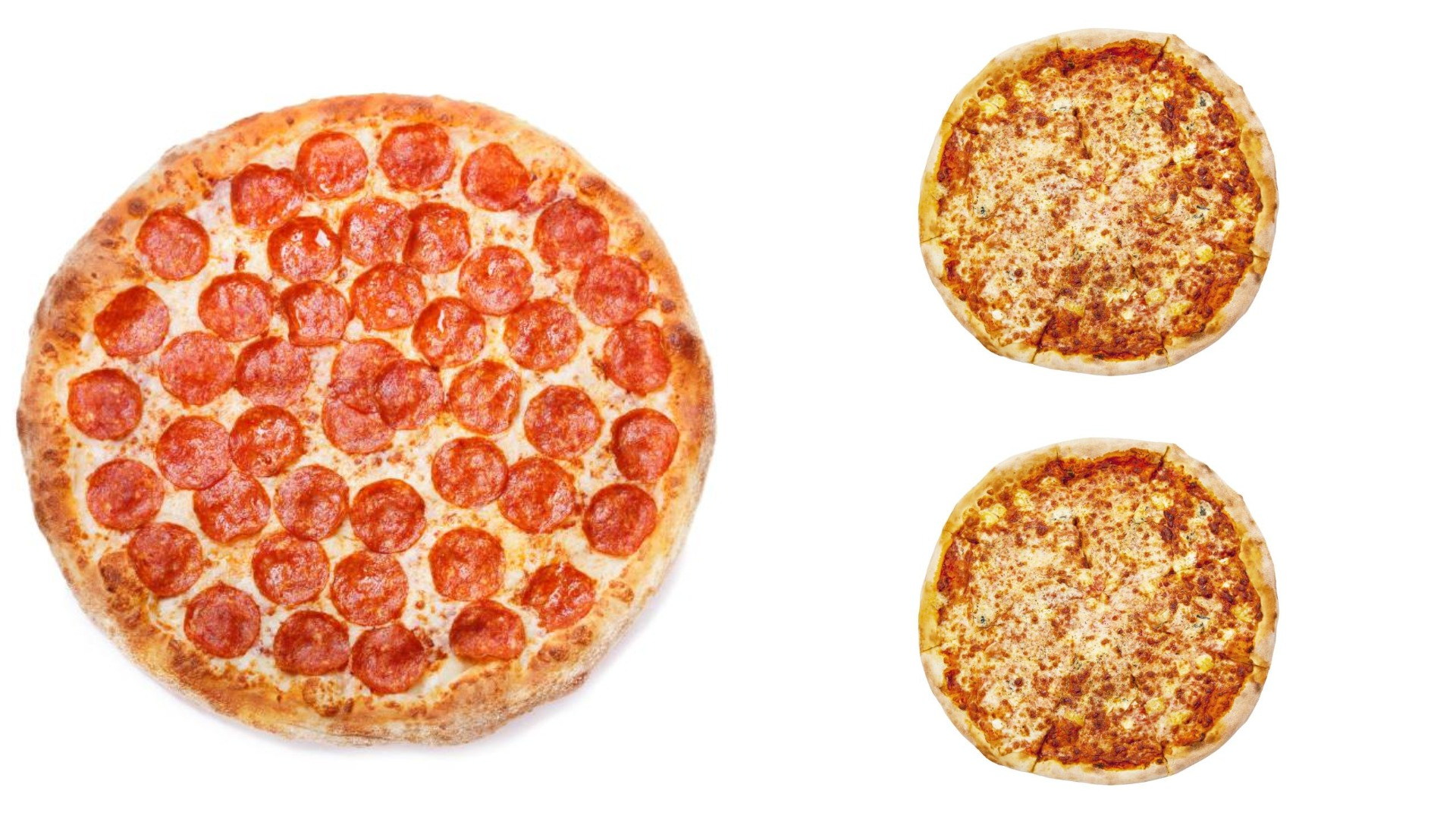A Large Pizza Contains More Total Pizza Than 2 Small Ones, Says Math
The greatest mathematical minds of past generations were likely developing computers or expanding our understanding of the universe, but I'm gratified to know that in 2019, they're busy with pizza calculations. Yesterday, @fermatslibrary—a Twitter account devoted to "illuminating academic papers"—tweeted a revelation that has since garnered more than 22,000 retweets: "One 18 inch pizza has more 'pizza' than two 12 inch pizzas."
Here's a useful counterintuitive fact: one 18 inch pizza has more 'pizza' than two 12 inch pizzas pic.twitter.com/hePSpG0pJs
— Fermat's Library (@fermatslibrary) January 7, 2019
Even my mathematically challenged brain can do the high-school geometry: A pizza's area is calculated by multiplying pi by the square of its radius. The radius is half the diameter. (See the calculation above.) Ergo—and here's where I picture myself in a pizza-related sequel to A Beautiful Mind—sharing a large pizza with a friend rather than each getting an individual small pie yields 14 more square inches of pizza for each of you. Beautiful. Thank you, Fernat's Library, whoever you are.
Now, there are some considerations to take into account before we declare the large-shared-pizza option objectively superior to individual pizzas. Namely, the two small pizzas yield more crust: Using a calculation to find the pizzas' circumference (circumference is pi times twice the radius), we find that ordering two small pizzas results in 18.85 more inches of crust, or 9.425 inches more crust per person.
When ordering our pizza(s) to share, each of us is at a mathematical crossroads:
Is 9.425 crust-inches > 14 square interior-inches?
Only you can know that, deep in your heart of hearts of pizza preferences.
